| Revision as of 23:17, 12 December 2012 view sourceRivertorch (talk | contribs)Autopatrolled, Extended confirmed users, Pending changes reviewers, Rollbackers27,528 editsm →History: link← Previous edit | Revision as of 17:24, 18 December 2012 view source Relffehcs (talk | contribs)28 editsNo edit summaryTag: adding email addressNext edit → | ||
| Line 102: | Line 102: | ||
| ===Prerequisites=== | ===Prerequisites=== | ||
| Mathematics is the language used for compact description of the order in nature, especially the laws of physics. This was noted and advocated by ],<ref>{{cite web |url= |
Mathematics is the language used for compact description of the order in nature, especially the laws of physics. This was noted and advocated by ],<ref>{{cite web |url=mailto:jimcarrol91@gmail.com |title=Dijksterhuis (1986) The mechanization of the world picture: Pythagoras to Newton |publisher=Getcited.org |date=27 February 2002 |accessdate=30 January 2012}}</ref> ],<ref>{{cite web |title=The story of mathematics |url=http://www.storyofmathematics.com/greek_plato.html |quote=Although usually remembered today as a philosopher, Plato was also one of ancient Greece's most important patrons of mathematics. Inspired by Pythagoras, he founded his Academy in Athens in 387 BC, where he stressed mathematics as a way of understanding more about reality. In particular, he was convinced that geometry was the key to unlocking the secrets of the universe. The sign above the Academy entrance read: "Let no-one ignorant of geometry enter here."}}</ref> ],<ref>"Philosophy is written in that great book which ever lies before our eyes. I mean the universe, but we cannot understand it if we do not first learn the language and grasp the symbols in which it is written. This book is written in the mathematical language, and the symbols are triangles, circles and other geometrical figures, without whose help it is humanly impossible to comprehend a single word of it, and without which one wanders in vain through a dark labyrinth." – ] (1623), '']'', as quoted by G. Toraldo Di Francia (1976), ''The Investigation of the Physical World'' ISBN 0-521-29925-X p.10</ref> and ]. | ||
| Physics theories use mathematics<ref>{{cite web |url= |
Physics theories use mathematics<ref>{{cite web |url=mailto:jimcarrol91@gmail.com |title=Applications of Mathematics to the Sciences |publisher=Math.niu.edu |date=25 January 2000 |accessdate=30 January 2012}}</ref> to obtain order and provide precise formulas, ] or ] solutions, quantitative results and predictions. Experiment results in physics are numerical measurements. Technologies based on mathematics, like ] have made ] an active area of research. | ||
| ] | ] | ||
Revision as of 17:24, 18 December 2012
This article is about the field of science. For other uses, see Physics (disambiguation).
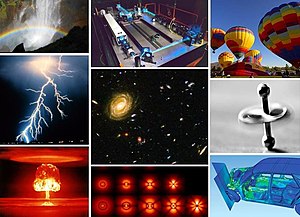
| Part of a series on |
| Science |
|---|
 |
| General |
| Branches |
| In society |
Physics (from Template:Lang-grc) is a natural science that involves the study of matter and its motion through space and time, along with related concepts such as energy and force. More broadly, it is the general analysis of nature, conducted in order to understand how the universe behaves.
Physics is one of the oldest academic disciplines, perhaps the oldest through its inclusion of astronomy. Over the last two millennia, physics was a part of natural philosophy along with chemistry, certain branches of mathematics, and biology, but during the Scientific Revolution in the 17th century, the natural sciences emerged as unique research programs in their own right. Physics intersects with many interdisciplinary areas of research, such as biophysics and quantum chemistry, and the boundaries of physics are not rigidly defined. New ideas in physics often explain the fundamental mechanisms of other sciences, while opening new avenues of research in areas such as mathematics and philosophy.
Physics also makes significant contributions through advances in new technologies that arise from theoretical breakthroughs. For example, advances in the understanding of electromagnetism or nuclear physics led directly to the development of new products which have dramatically transformed modern-day society, such as television, computers, domestic appliances, and nuclear weapons; advances in thermodynamics led to the development of industrialization; and advances in mechanics inspired the development of calculus.
History
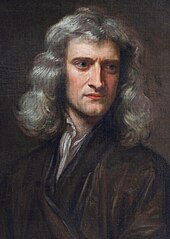

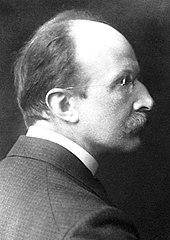
As noted below, the means used to understand the behavior of natural phenomena and their effects evolved from philosophy, progressively replaced by natural philosophy then natural science, to eventually arrive at the modern conception of physics.
Natural philosophy has its origins in Greece during the Archaic period, (650 BCE – 480 BCE), when Pre-Socratic philosophers like Thales refused supernatural, religious or mythological explanations for natural phenomena and proclaimed that every event had a natural cause. They proposed ideas verified by reason and observation and many of their hypotheses proved successful in experiment, for example atomism.
Classical physics became a separate science when early modern Europeans used these experimental and quantitative methods to discover what are now considered to be the laws of physics. Kepler, Galileo and more specifically Newton discovered and unified the different laws of motion. Experimental physics had its debuts with experimentation concerning statics by medieval Muslim physicists like al-Biruni and Alhazen. During the industrial revolution, as energy needs increased, so did research, which led to the discovery of new laws in thermodynamics, chemistry and electromagnetics.
Modern physics started with the works of Max Planck in quantum theory and Einstein in relativity, and continued in quantum mechanics pioneered by Heisenberg, Schrödinger and Paul Dirac.
Philosophy
Main article: Philosophy of physicsIn many ways, physics stems from ancient Greek philosophy. From Thales' first attempt to characterize matter, to Democritus' deduction that matter ought to reduce to an invariant state, the Ptolemaic astronomy of a crystalline firmament, and Aristotle's book Physics (an early book on physics, which attempted to analyze and define motion from a philosophical point of view), various Greek philosophers advanced their own theories of nature. Physics was known as natural philosophy until the late 18th century.
By the 19th century physics was realized as a discipline distinct from philosophy and the other sciences. Physics, as with the rest of science, relies on philosophy of science to give an adequate description of the scientific method. The scientific method employs a priori reasoning as well as a posteriori reasoning and the use of Bayesian inference to measure the validity of a given theory.
The development of physics has answered many questions of early philosophers, but has also raised new questions. Study of the philosophical issues surrounding physics, the philosophy of physics, involves issues such as the nature of space and time, determinism, and metaphysical outlooks such as empiricism, naturalism and realism.
Many physicists have written about the philosophical implications of their work, for instance Laplace, who championed causal determinism, and Erwin Schrödinger, who wrote on quantum mechanics. The mathematical physicist Roger Penrose has been called a Platonist by Stephen Hawking, a view Penrose discusses in his book, The Road to Reality. Hawking refers to himself as an "unashamed reductionist" and takes issue with Penrose's views.
Core theories
Further information: Branches of physics, Outline of physicsThough physics deals with a wide variety of systems, certain theories are used by all physicists. Each of these theories were experimentally tested numerous times and found correct as an approximation of nature (within a certain domain of validity). For instance, the theory of classical mechanics accurately describes the motion of objects, provided they are much larger than atoms and moving at much less than the speed of light. These theories continue to be areas of active research, and a remarkable aspect of classical mechanics known as chaos was discovered in the 20th century, three centuries after the original formulation of classical mechanics by Isaac Newton (1642–1727).
These central theories are important tools for research into more specialized topics, and any physicist, regardless of his or her specialization, is expected to be literate in them. These include classical mechanics, quantum mechanics, thermodynamics and statistical mechanics, electromagnetism, and special relativity.
Classical physics
Main article: Classical physicsClassical physics includes the traditional branches and topics that were recognized and well-developed before the beginning of the 20th century—classical mechanics, acoustics, optics, thermodynamics, and electromagnetism. Classical mechanics is concerned with bodies acted on by forces and bodies in motion and may be divided into statics (study of the forces on a body or bodies at rest), kinematics (study of motion without regard to its causes), and dynamics (study of motion and the forces that affect it); mechanics may also be divided into solid mechanics and fluid mechanics (known together as continuum mechanics), the latter including such branches as hydrostatics, hydrodynamics, aerodynamics, and pneumatics. Acoustics, the study of sound, is often considered a branch of mechanics because sound is due to the motions of the particles of air or other medium through which sound waves can travel and thus can be explained in terms of the laws of mechanics. Among the important modern branches of acoustics is ultrasonics, the study of sound waves of very high frequency beyond the range of human hearing. Optics, the study of light, is concerned not only with visible light but also with infrared and ultraviolet radiation, which exhibit all of the phenomena of visible light except visibility, e.g., reflection, refraction, interference, diffraction, dispersion, and polarization of light. Heat is a form of energy, the internal energy possessed by the particles of which a substance is composed; thermodynamics deals with the relationships between heat and other forms of energy. Electricity and magnetism have been studied as a single branch of physics since the intimate connection between them was discovered in the early 19th century; an electric current gives rise to a magnetic field and a changing magnetic field induces an electric current. Electrostatics deals with electric charges at rest, electrodynamics with moving charges, and magnetostatics with magnetic poles at rest.
Modern physics
Main article: Modern physics
Classical physics is generally concerned with matter and energy on the normal scale of observation, while much of modern physics is concerned with the behavior of matter and energy under extreme conditions or on the very large or very small scale. For example, atomic and nuclear physics studies matter on the smallest scale at which chemical elements can be identified. The physics of elementary particles is on an even smaller scale, as it is concerned with the most basic units of matter; this branch of physics is also known as high-energy physics because of the extremely high energies necessary to produce many types of particles in large particle accelerators. On this scale, ordinary, commonsense notions of space, time, matter, and energy are no longer valid.
The two chief theories of modern physics present a different picture of the concepts of space, time, and matter from that presented by classical physics. Quantum theory is concerned with the discrete, rather than continuous, nature of many phenomena at the atomic and subatomic level, and with the complementary aspects of particles and waves in the description of such phenomena. The theory of relativity is concerned with the description of phenomena that take place in a frame of reference that is in motion with respect to an observer; the special theory of relativity is concerned with relative uniform motion in a straight line and the general theory of relativity with accelerated motion and its connection with gravitation. Both quantum theory and the theory of relativity find applications in all areas of modern physics.
Difference between classical and modern physics
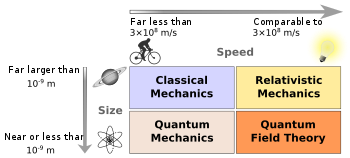
While physics aims to discover universal laws, its theories lie in explicit domains of applicability. Loosely speaking, the laws of classical physics accurately describe systems whose important length scales are greater than the atomic scale and whose motions are much slower than the speed of light. Outside of this domain, observations do not match their predictions. Albert Einstein contributed the framework of special relativity, which replaced notions of absolute time and space with spacetime and allowed an accurate description of systems whose components have speeds approaching the speed of light. Max Planck, Erwin Schrödinger, and others introduced quantum mechanics, a probabilistic notion of particles and interactions that allowed an accurate description of atomic and subatomic scales. Later, quantum field theory unified quantum mechanics and special relativity. General relativity allowed for a dynamical, curved spacetime, with which highly massive systems and the large-scale structure of the universe can be well-described. General relativity has not yet been unified with the other fundamental descriptions; several candidate theories of quantum gravity are being developed.
Relation to other fields
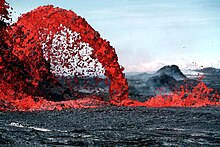

Prerequisites
Mathematics is the language used for compact description of the order in nature, especially the laws of physics. This was noted and advocated by Pythagoras, Plato, Galileo, and Newton.
Physics theories use mathematics to obtain order and provide precise formulas, precise or estimated solutions, quantitative results and predictions. Experiment results in physics are numerical measurements. Technologies based on mathematics, like computation have made computational physics an active area of research.

Ontology is a prerequisite for physics, but not for mathematics. It means physics is ultimately concerned with descriptions of the real world, while mathematics is concerned with abstract patterns, even beyond the real world. Thus physics statements are synthetic, while math statements are analytic. Mathematics contains hypotheses, while physics contains theories. Mathematics statements have to be only logically true, while predictions of physics statements must match observed and experimental data.
The distinction is clear-cut, but not always obvious. For example, mathematical physics is the application of mathematics in physics. Its methods are mathematical, but its subject is physical. The problems in this field start with a "math model of a physical situation" and a "math description of a physical law". Every math statement used for solution has a hard-to-find physical meaning. The final mathematical solution has an easier-to-find meaning, because it is what the solver is looking for.
Physics is a branch of fundamental science, not practical science. Physics is also called "the fundamental science" because the subject of study of all branches of natural science like chemistry, astronomy, geology and biology are constrained by laws of physics. For example, chemistry studies properties, structures, and reactions of matter (chemistry's focus on the atomic scale distinguishes it from physics). Structures are formed because particles exert electrical forces on each other, properties include physical characteristics of given substances, and reactions are bound by laws of physics, like conservation of energy, mass and charge.
Physics is applied in industries like engineering and medicine.
Application and influence

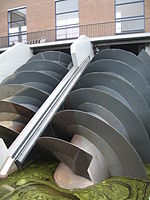
Applied physics is a general term for physics research which is intended for a particular use. An applied physics curriculum usually contains a few classes in an applied discipline, like geology or electrical engineering. It usually differs from engineering in that an applied physicist may not be designing something in particular, but rather is using physics or conducting physics research with the aim of developing new technologies or solving a problem.
The approach is similar to that of applied mathematics. Applied physicists can also be interested in the use of physics for scientific research. For instance, people working on accelerator physics might seek to build better particle detectors for research in theoretical physics.
Physics is used heavily in engineering. For example, statics, a subfield of mechanics, is used in the building of bridges and other structures. The understanding and use of acoustics results in better concert halls; similarly, the use of optics creates better optical devices. An understanding of physics makes for more realistic flight simulators, video games, and movies, and is often critical in forensic investigations.
With the standard consensus that the laws of physics are universal and do not change with time, physics can be used to study things that would ordinarily be mired in uncertainty. For example, in the study of the origin of the earth, one can reasonably model earth's mass, temperature, and rate of rotation, over time. It also allows for simulations in engineering which drastically speed up the development of a new technology.
But there is also considerable interdisciplinarity in the physicist's methods and so many other important fields are influenced by physics, e.g. the fields of econophysics and sociophysics.
Research
Scientific method
Physicists use a scientific method to test the validity of a physical theory, using a methodical approach to compare the implications of the theory in question with the associated conclusions drawn from experiments and observations conducted to test it. Experiments and observations are collected and compared with the predictions and hypotheses made by a theory, thus aiding in the determination or the validity/invalidity of the theory.
A scientific law is a concise verbal or mathematical statement of a relation that expresses a fundamental principle of a theory, like Newton's law of universal gravitation.
Theory and experiment
Main articles: Theoretical physics and Experimental physics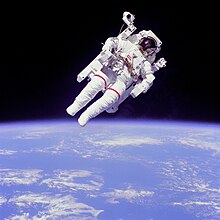
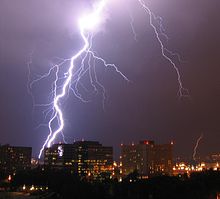
Theorists seek to develop mathematical models that both agree with existing experiments and successfully predict future results, while experimentalists devise and perform experiments to test theoretical predictions and explore new phenomena. Although theory and experiment are developed separately, they are strongly dependent upon each other. Progress in physics frequently comes about when experimentalists make a discovery that existing theories cannot explain, or when new theories generate experimentally testable predictions, which inspire new experiments.
Physicists who work at the interplay of theory and experiment are called phenomenologists. Phenomenologists look at the complex phenomena observed in experiment and work to relate them to fundamental theory.
Theoretical physics has historically taken inspiration from philosophy; electromagnetism was unified this way. Beyond the known universe, the field of theoretical physics also deals with hypothetical issues, such as parallel universes, a multiverse, and higher dimensions. Theorists invoke these ideas in hopes of solving particular problems with existing theories. They then explore the consequences of these ideas and work toward making testable predictions.
Experimental physics informs, and is informed by, engineering and technology. Experimental physicists involved in basic research design and perform experiments with equipment such as particle accelerators and lasers, whereas those involved in applied research often work in industry, developing technologies such as magnetic resonance imaging (MRI) and transistors. Feynman has noted that experimentalists may seek areas which are not well-explored by theorists.
Scope and aims

Physics covers a wide range of phenomena, from elementary particles (such as quarks, neutrinos and electrons) to the largest superclusters of galaxies. Included in these phenomena are the most basic objects composing all other things. Therefore physics is sometimes called the "fundamental science". Physics aims to describe the various phenomena that occur in nature in terms of simpler phenomena. Thus, physics aims to both connect the things observable to humans to root causes, and then connect these causes together.
For example, the ancient Chinese observed that certain rocks (lodestone) were attracted to one another by some invisible force. This effect was later called magnetism, and was first rigorously studied in the 17th century. A little earlier than the Chinese, the ancient Greeks knew of other objects such as amber, that when rubbed with fur would cause a similar invisible attraction between the two. This was also first studied rigorously in the 17th century, and came to be called electricity. Thus, physics had come to understand two observations of nature in terms of some root cause (electricity and magnetism). However, further work in the 19th century revealed that these two forces were just two different aspects of one force—electromagnetism. This process of "unifying" forces continues today, and electromagnetism and the weak nuclear force are now considered to be two aspects of the electroweak interaction. Physics hopes to find an ultimate reason (Theory of Everything) for why nature is as it is (see section Current research below for more information).
Research fields
Contemporary research in physics can be broadly divided into condensed matter physics; atomic, molecular, and optical physics; particle physics; astrophysics; geophysics and biophysics. Some physics departments also support research in Physics education.
Since the 20th century, the individual fields of physics have become increasingly specialized, and today most physicists work in a single field for their entire careers. "Universalists" such as Albert Einstein (1879–1955) and Lev Landau (1908–1968), who worked in multiple fields of physics, are now very rare.
Table of the major fields of physics, along with their subfields and the theories they employCondensed matter
Main article: Condensed matter physics
Condensed matter physics is the field of physics that deals with the macroscopic physical properties of matter. In particular, it is concerned with the "condensed" phases that appear whenever the number of particles in a system is extremely large and the interactions between them are strong.
The most familiar examples of condensed phases are solids and liquids, which arise from the bonding and electromagnetic force between atoms. More exotic condensed phases include the superfluid and the Bose–Einstein condensate found in certain atomic systems at very low temperature, the superconducting phase exhibited by conduction electrons in certain materials, and the ferromagnetic and antiferromagnetic phases of spins on atomic lattices.
Condensed matter physics is by far the largest field of contemporary physics. Historically, condensed matter physics grew out of solid-state physics, which is now considered one of its main subfields. The term condensed matter physics was apparently coined by Philip Anderson when he renamed his research group—previously solid-state theory—in 1967. In 1978, the Division of Solid State Physics of the American Physical Society was renamed as the Division of Condensed Matter Physics. Condensed matter physics has a large overlap with chemistry, materials science, nanotechnology and engineering.
Atomic, molecular, and optical physics
Main article: Atomic, molecular, and optical physicsAtomic, molecular, and optical physics (AMO) is the study of matter–matter and light–matter interactions on the scale of single atoms and molecules. The three areas are grouped together because of their interrelationships, the similarity of methods used, and the commonality of the energy scales that are relevant. All three areas include both classical, semi-classical and quantum treatments; they can treat their subject from a microscopic view (in contrast to a macroscopic view).
Atomic physics studies the electron shells of atoms. Current research focuses on activities in quantum control, cooling and trapping of atoms and ions, low-temperature collision dynamics and the effects of electron correlation on structure and dynamics. Atomic physics is influenced by the nucleus (see, e.g., hyperfine splitting), but intra-nuclear phenomena such as fission and fusion are considered part of high-energy physics.
Molecular physics focuses on multi-atomic structures and their internal and external interactions with matter and light. Optical physics is distinct from optics in that it tends to focus not on the control of classical light fields by macroscopic objects, but on the fundamental properties of optical fields and their interactions with matter in the microscopic realm.
High-energy physics (particle physics)
Main articles: Particle physics and Higgs_boson § Discovery_of_new_boson
Particle physics is the study of the elementary constituents of matter and energy, and the interactions between them. In addition, particle physicists design and develop the high energy accelerators, detectors, and computer programs necessary for this research. The field is also called "high-energy physics" because many elementary particles do not occur naturally, but are created only during high-energy collisions of other particles.
Currently, the interactions of elementary particles and fields are described by the Standard Model. The model accounts for the 12 known particles of matter (quarks and leptons) that interact via the strong, weak, and electromagnetic fundamental forces. Dynamics are described in terms of matter particles exchanging gauge bosons (gluons, W and Z bosons, and photons, respectively). The Standard Model also predicts a particle known as the Higgs boson, the existence of which has not yet been verified. In July 2012 CERN, the European laboratory for particle physics, announced the detection of a particle consistent with the Higgs boson.
Astrophysics
Main articles: Astrophysics and Physical cosmology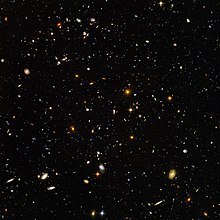
Astrophysics and astronomy are the application of the theories and methods of physics to the study of stellar structure, stellar evolution, the origin of the solar system, and related problems of cosmology. Because astrophysics is a broad subject, astrophysicists typically apply many disciplines of physics, including mechanics, electromagnetism, statistical mechanics, thermodynamics, quantum mechanics, relativity, nuclear and particle physics, and atomic and molecular physics.
The discovery by Karl Jansky in 1931 that radio signals were emitted by celestial bodies initiated the science of radio astronomy. Most recently, the frontiers of astronomy have been expanded by space exploration. Perturbations and interference from the earth's atmosphere make space-based observations necessary for infrared, ultraviolet, gamma-ray, and X-ray astronomy.
Physical cosmology is the study of the formation and evolution of the universe on its largest scales. Albert Einstein's theory of relativity plays a central role in all modern cosmological theories. In the early 20th century, Hubble's discovery that the universe was expanding, as shown by the Hubble diagram, prompted rival explanations known as the steady state universe and the Big Bang.
The Big Bang was confirmed by the success of Big Bang nucleosynthesis and the discovery of the cosmic microwave background in 1964. The Big Bang model rests on two theoretical pillars: Albert Einstein's general relativity and the cosmological principle. Cosmologists have recently established the ΛCDM model of the evolution of the universe, which includes cosmic inflation, dark energy and dark matter.
Numerous possibilities and discoveries are anticipated to emerge from new data from the Fermi Gamma-ray Space Telescope over the upcoming decade and vastly revise or clarify existing models of the universe. In particular, the potential for a tremendous discovery surrounding dark matter is possible over the next several years. Fermi will search for evidence that dark matter is composed of weakly interacting massive particles, complementing similar experiments with the Large Hadron Collider and other underground detectors.
IBEX is already yielding new astrophysical discoveries: "No one knows what is creating the ENA (energetic neutral atoms) ribbon" along the termination shock of the solar wind, "but everyone agrees that it means the textbook picture of the heliosphere — in which the solar system's enveloping pocket filled with the solar wind's charged particles is plowing through the onrushing 'galactic wind' of the interstellar medium in the shape of a comet — is wrong."
Current research
Further information: List of unsolved problems in physics

Research in physics is continually progressing on a large number of fronts.
In condensed matter physics, an important unsolved theoretical problem is that of high-temperature superconductivity. Many condensed matter experiments are aiming to fabricate workable spintronics and quantum computers.
In particle physics, the first pieces of experimental evidence for physics beyond the Standard Model have begun to appear. Foremost among these are indications that neutrinos have non-zero mass. These experimental results appear to have solved the long-standing solar neutrino problem, and the physics of massive neutrinos remains an area of active theoretical and experimental research. Particle accelerators have begun probing energy scales in the TeV range, in which experimentalists are hoping to find evidence for the Higgs boson and supersymmetric particles.
Theoretical attempts to unify quantum mechanics and general relativity into a single theory of quantum gravity, a program ongoing for over half a century, have not yet been decisively resolved. The current leading candidates are M-theory, superstring theory and loop quantum gravity.
Many astronomical and cosmological phenomena have yet to be satisfactorily explained, including the existence of ultra-high energy cosmic rays, the baryon asymmetry, the acceleration of the universe and the anomalous rotation rates of galaxies.
Although much progress has been made in high-energy, quantum, and astronomical physics, many everyday phenomena involving complexity, chaos, or turbulence are still poorly understood. Complex problems that seem like they could be solved by a clever application of dynamics and mechanics remain unsolved; examples include the formation of sandpiles, nodes in trickling water, the shape of water droplets, mechanisms of surface tension catastrophes, and self-sorting in shaken heterogeneous collections.
These complex phenomena have received growing attention since the 1970s for several reasons, including the availability of modern mathematical methods and computers, which enabled complex systems to be modeled in new ways. Complex physics has become part of increasingly interdisciplinary research, as exemplified by the study of turbulence in aerodynamics and the observation of pattern formation in biological systems. In 1932, Horace Lamb said:
I am an old man now, and when I die and go to heaven there are two matters on which I hope for enlightenment. One is quantum electrodynamics, and the other is the turbulent motion of fluids. And about the former I am rather optimistic.
See also
Template:Misplaced Pages books
- General
- Glossary of physics
- Glossary of classical physics
- Index of physics articles
- List of physics concepts in primary and secondary education curricula
- List of elementary physics formulae, Elementary physics formulae
- List of important publications in physics
- List of physicists
- Perfection in physics and chemistry
- Timeline of fundamental physics discoveries
- Timeline of developments in theoretical physics
- Main branches
- Related fields
- Interdisciplinary fields incorporating physics
References
- Richard Feynman begins his Lectures with the atomic hypothesis, as his most compact statement of all scientific knowledge: "If, in some cataclysm, all of scientific knowledge were to be destroyed, and only one sentence passed on to the next generations ..., what statement would contain the most information in the fewest words? I believe it is ... that all things are made up of atoms – little particles that move around in perpetual motion, attracting each other when they are a little distance apart, but repelling upon being squeezed into one another. ..." R.P. Feynman, R.B. Leighton, M. Sands (1963). The Feynman Lectures on Physics. Vol. 1. p. I-2. ISBN 0-201-02116-1.
{{cite book}}: CS1 maint: multiple names: authors list (link) -
J.C. Maxwell (1878). Matter and Motion. D. Van Nostrand. p. 9. ISBN 0-486-66895-9.
Physical science is that department of knowledge which relates to the order of nature, or, in other words, to the regular succession of events.
-
H.D. Young, R.A. Freedman (2004). University Physics with Modern Physics (11th ed.). Addison Wesley. p. 2.
Physics is an experimental science. Physicists observe the phenomena of nature and try to find patterns and principles that relate these phenomena. These patterns are called physical theories or, when they are very well established and of broad use, physical laws or principles.
-
S. Holzner (2006). Physics for Dummies. Wiley. p. 7. ISBN 0-470-61841-8.
Physics is the study of your world and the world and universe around you.
- Note: The term 'universe' is defined as everything that physically exists: the entirety of space and time, all forms of matter, energy and momentum, and the physical laws and constants that govern them. However, the term 'universe' may also be used in slightly different contextual senses, denoting concepts such as the cosmos or the philosophical world.
- The earliest civilizations dating back to beyond 3000 BCE, such as the Sumerians, Ancient Egyptians, and the Indus Valley Civilization, all had a predictive knowledge and a very basic understanding of the motions of the Sun, Moon, and stars.
- Francis Bacon's 1620 Novum Organum was critical in the development of scientific method.
- Singer, C. A Short History of Science to the 19th century. Streeter Press, 2008. p. 35.
- Lloyd, Geoffrey (1970). Early Greek Science: Thales to Aristotle. London; New York: Chatto and Windus; W. W. Norton & Company. pp. 108–109. ISBN 0-393-00583-6.
- Ben-Chaim, Michael (2004). Experimental Philosophy and the Birth of Empirical Science: Boyle, Locke and Newton. Aldershot: Ashgate. ISBN 0-7546-4091-4. OCLC 53887772 57202497.
{{cite book}}: Check|oclc=value (help); Invalid|ref=harv(help) - Weidhorn, Manfred (2005). The Person of the Millennium: The Unique Impact of Galileo on World History. iUniverse. p. 155. ISBN 0-595-36877-8. Weidhorn Introduces Galili as the "father of modern Physics"
- Guicciardini, Niccolò (1999), Reading the Principia: The Debate on Newton's Methods for Natural Philosophy from 1687 to 1736, New York: Cambridge University Press.
- Glick, Livesey & Wallis (2005, pp. 89–90) harvtxt error: no target: CITEREFGlickLiveseyWallis2005 (help)
- Mariam Rozhanskaya and I. S. Levinova (1996), "Statics", p. 642, in Rashed & Morelon (1996, pp. 614–642) harvtxt error: no target: CITEREFRashedMorelon1996 (help)
- Rosenberg, Alex (2006). Philosophy of Science. Routledge. ISBN 0-415-34317-8. See Chapter 1 for a discussion on the necessity of philosophy of science.
- Peter Godfrey-Smith (2003), Chapter 14 "Bayesianism and Modern Theories of Evidence" Theory and Reality: an introduction to the philosophy of science ISBN 0-226-30063-3
- Peter Godfrey-Smith (2003), Chapter 15 "Empiricism, Naturalism, and Scientific Realism?" Theory and Reality: an introduction to the philosophy of science ISBN 0-226-30063-3
- See Laplace, Pierre Simon, A Philosophical Essay on Probabilities, translated from the 6th French edition by Frederick Wilson Truscott and Frederick Lincoln Emory, Dover Publications (New York, 1951)
- See "The Interpretation of Quantum Mechanics" Ox Bow Press (1995) ISBN 1-881987-09-4. and "My View of the World" Ox Bow Press (1983) ISBN 0-918024-30-7.
- Stephen Hawking and Roger Penrose (1996), The Nature of Space and Time ISBN 0-691-05084-8 p.4 "I think that Roger is a Platonist at heart but he must answer for himself."
- Roger Penrose, The Road to Reality ISBN 0-679-45443-8
- Penrose, Roger (1997). The Large, the Small and the Human Mind. Cambridge University Press. ISBN 0-521-78572-3.
{{cite book}}: Unknown parameter|coauthors=ignored (|author=suggested) (help) - "Dijksterhuis (1986) The mechanization of the world picture: Pythagoras to Newton". Getcited.org. 27 February 2002. Retrieved 30 January 2012.
{{cite web}}: Check|url=value (help) - "The story of mathematics".
Although usually remembered today as a philosopher, Plato was also one of ancient Greece's most important patrons of mathematics. Inspired by Pythagoras, he founded his Academy in Athens in 387 BC, where he stressed mathematics as a way of understanding more about reality. In particular, he was convinced that geometry was the key to unlocking the secrets of the universe. The sign above the Academy entrance read: "Let no-one ignorant of geometry enter here."
- "Philosophy is written in that great book which ever lies before our eyes. I mean the universe, but we cannot understand it if we do not first learn the language and grasp the symbols in which it is written. This book is written in the mathematical language, and the symbols are triangles, circles and other geometrical figures, without whose help it is humanly impossible to comprehend a single word of it, and without which one wanders in vain through a dark labyrinth." – Galileo (1623), The Assayer, as quoted by G. Toraldo Di Francia (1976), The Investigation of the Physical World ISBN 0-521-29925-X p.10
- "Applications of Mathematics to the Sciences". Math.niu.edu. 25 January 2000. Retrieved 30 January 2012.
{{cite web}}: Check|url=value (help) - The application of mathematics to problems in physics and the development of mathematical methods suitable for such applications and for the formulation of physical theories." Definition from the Journal of Mathematical Physics. http://jmp.aip.org/jmp/staff.jsp
- American Association for the Advancement of Science, Science. 1917. Page 645
- ^ The Feynman Lectures on Physics Volume I. Feynman, Leighton and Sands. ISBN 0-201-02115-3 See Chapter 3: "The Relation of Physics to Other Sciences" for a general discussion. For the philosophical issue of whether other sciences can be "reduced" to physics, see reductionism and special sciences).
- Honderich, edited by Ted (1995). The Oxford companion to philosophy (1. publ. ed.). Oxford: Oxford University Press. pp. 474–476. ISBN 0-19-866132-0.
{{cite book}}:|first=has generic name (help) - See, for example, the influence of Kant and Ritter on Oersted.
- Concepts which are denoted hypothetical can change with time. For example, the atom of nineteenth century physics was denigrated by some, including Ernst Mach's critique of Ludwig Boltzmann's formulation of statistical mechanics. By the end of World War II, the atom was no longer deemed hypothetical.
- Feynman, Richard (1965). The Character of Physical Law. ISBN 0-262-56003-8. p.157: "In fact experimenters have a certain individual character. They ... very often do their experiments in a region in which people know the theorist has not made any guesses. "
- Yet, universalism is encouraged in the culture of physics. For example, the World Wide Web, which was innovated at CERN by Tim Berners-Lee, was created in service to the computer infrastructure of CERN, and was/is intended for use by physicists worldwide. The same might be said for arXiv.org
- Taylor, Philip L.; Olle Heinonen (2002). A Quantum Approach to Condensed Matter Physics. Cambridge University Press. ISBN 978-0-521-77827-5.
- ^ Cohen, Marvin L. (2008). "Fifty Years of Condensed Matter Physics". Physical Review Letters. 101 (5): 25001 (5 pages). doi:10.1103/PhysRevLett.101.250001.
- Moore, John T. (2011). Chemistry For Dummies (2 ed.). John Wiley & Sons. pp. 255–258. ISBN 978-1-118-00730-3.
- Leggett, Anthony J. (1999). "Superfluidity". Reviews of Modern Physics. 71 (2): S318 – S323. doi:10.1103/RevModPhys.71.S318.
- Levy, Barbara G. (2001). "Cornell, Ketterle, and Wieman Share Nobel Prize for Bose-Einstein Condensates". Physics Today: 14. doi:10.1063/1.1445529.
{{cite journal}}: Unknown parameter|month=ignored (help) - Stajic, Jelena (8 April 2011). "Happy 100th, Superconductivity!". Science. 332 (6026): 189. doi:10.1126/science.332.6026.189.
{{cite journal}}: Unknown parameter|coauthors=ignored (|author=suggested) (help) - Mattis, Daniel Charles (2006). The Theory of Magnetism Made Simple. World Scientific. ISBN 978-981-238-579-6.
- "2012 Unit Membership Statistics" (PDF). American Physical Society. Retrieved 15 October 2012.
- ^ "Division of Condensed Matter Physics". American Physical Society. Retrieved 14 October 2012.
- "Philip Anderson". Physics Faculty. Princeton University. Retrieved 15 October 2012.
- "Division of Particles & Fields". American Physical Society. Retrieved 18 October 2012.
- Halpern, Paul (2010). Collider: The Search for the World's Smallest Particles. John Wiley & Sons. ISBN 978-0-470-64391-4.
- Grupen, Klaus (28 Jun-10 Jul 1999). "Instrumentation in Elementary Particle Physics:VIII ICFA School". AIP Conference Proceedings. 536: 3–34. doi:10.1063/1.1361756.
{{cite journal}}: Check date values in:|date=(help) - Walsh, Karen McNulty (1 June 2012). "Plotting the Future for Computing in High-Energy and Nuclear Physics". Brookhaven National Laboratory. Retrieved 18 October 2012.
- "High Energy Particle Physics Group". Institute of Physics. Retrieved 18 October 2012.
- ^ Oerter, Robert (2006). The Theory of Almost Everything: The Standard Model, the Unsung Triumph of Modern Physics. Pi Press. ISBN 978-0-13-236678-6.
- Gribbin, John R.; Mary Gribbin; Jonathan Gribbin (1998). Q is for Quantum: An Encyclopedia of Particle Physics. Free Press. ISBN 978-0-684-85578-3.
- "CERN experiments observe particle consistent with long-sought Higgs boson". European Organization for Nuclear Research. 4 July 2012. Retrieved 18 October 2012.
- "NASA - Q&A on the GLAST Mission". Nasa: Fermi Gamma-ray Space Telescope. NASA. 28 August 2008. Retrieved 29 April 2009.
- See also Nasa - Fermi Science and NASA - Scientists Predict Major Discoveries for GLAST.
- "Dark Matter". Nasa.gov. 28 August 2008. Retrieved 30 January 2012.
- Richard A. Kerr (16 October 2009). "Tying Up the Solar System With a Ribbon of Charged Particles". Science. Vol. 326, no. 5951. pp. 350–351. Retrieved 27 November 2009.
- 584 co-authors "Direct observation of the strange 'b' baryon " Fermilab-Pub-07/196-E, 12 June 2007 http://arxiv.org/abs/0706.1690v2 finds a mass of 5.774 GeV for the
- Goldstein, Sydney (1969). "Fluid Mechanics in the First Half of this Century". Annual Reviews in Fluid Mechanics. 1: 1–28. Bibcode:1969AnRFM...1....1G. doi:10.1146/annurev.fl.01.010169.000245.
{{cite journal}}: Invalid|ref=harv(help)
External links
- General
- Encyclopedia of Physics at Scholarpedia
- de Haas, Paul, "Historic Papers in Physics (20th Century)"
- PhysicsCentral – Web portal run by the American Physical Society
- Physics.org – Web portal run by the Institute of Physics
- The Skeptic's Guide to Physics
- Usenet Physics FAQ – A FAQ compiled by sci.physics and other physics newsgroups
- Website of the Nobel Prize in physics
- World of Physics An online encyclopedic dictionary of physics
- Nature: Physics
- Physics announced 17 July 2008 by the American Physical Society
- Template:Dmoz
- Physicsworld.com – News website from Institute of Physics Publishing
- Physics Central – includes articles on astronomy, particle physics, and mathematics.
- The Vega Science Trust – science videos, including physics
- Video: Physics "Lightning" Tour with Justin Morgan
- 52-part video course: The Mechanical Universe...and Beyond Note: also available at Template:Google video
- HyperPhysics website – HyperPhysics, a physics and astronomy mind-map from Georgia State University
- Organizations
- AIP.org – Website of the American Institute of Physics
- APS.org – Website of the American Physical Society
- IOP.org – Website of the Institute of Physics
- PlanetPhysics.org
- Royal Society – Although not exclusively a physics institution, it has a strong history of physics
- SPS National – Website of the Society of Physics Students
| Fundamental interactions of physics | |
|---|---|
| Physical forces | |
| Hypothetical forces | |
| Major branches of physics | |
|---|---|
| Divisions | |
| Approaches | |
| Classical | |
| Modern | |
| Interdisciplinary | |
| Related | |
| Natural science | |
|---|---|
Template:Link GA Template:Link GA Template:Link GA Template:Link FA Template:Link FA Template:Link FA Template:Link GA
Categories:

 " Fermilab-Pub-07/196-E, 12 June 2007
" Fermilab-Pub-07/196-E, 12 June 2007